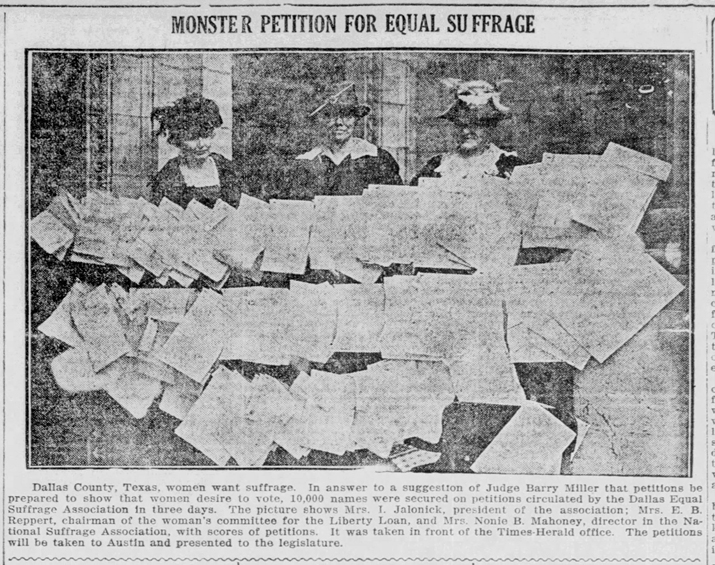10,000 Dallas Women Want To Vote by Mylinda Farr
Artist Statement
Replicating the dynamic photo under the March 1918 newspaper caption of “MONSTER PETITION FOR EQUAL SUFFRAGE,” this art “10,000 Dallas Women Want To Vote,” captures three leaders of the Dallas Equal Suffrage Association, posing behind their evidence. Less than a week earlier, Nona B. Mahoney (far right, nicknamed “Nonie”) an early leader in the Texas suffrage movement, who “backed her political views and candidates with an open purse,” called on Dallas’ Representative, Judge Barry Miller, to change his opposition and support a bill for women to vote in the summer primary election. Nonie humorously explained, “He was grouchy when I first saw him. I jollied him, and he started to laugh and joke. I tried to buy him, and he said it would take 5,000 names of Dallas women on a petition to change him.” Motivated to visit mothers and teachers at schools, workers at factories, and students and faculty at Southern Methodist University, 10,000 women signed the petition. Nonie continued, “The interest in this petition is not confined to any one class. The women of Highland Park and the mill districts are equally interested and equally anxious to sign.”
Ready to return to Austin, she concluded, “The large number of signatures obtained indicates clearly what the sentiment of Dallas women is regarding suffrage. At every place we visited with the petitions, at least 99 percent of the women readily attached their signatures. Refusals were rarely met. This demonstration shows that women have waked up to the fact that all women have the same interests. They must stand together to protect their common interests.”
“It will be a pleasure for me to keep my word to the ladies.”
Barry Miller, who believed that a representative is “a servant to the ruler of the people he represents,” responded, “I didn’t believe they could do it. I made a bluff, and they called it.” Supporting the bill, Miller voted yes. Commenting on some of the women’s names holding as great of intelligence as that of any legislative member, Miller resolved, “It will be a pleasure for me to keep my word to the ladies.”
In 1918, Texas women did not wait for the slow process to amend their state constitution or for a federal amendment for equal suffrage, rather they pressed the Governor William P. Hobby to submit a Primary Election bill. C. B. Metcalf of San Angelo introduced the bill; passing the house and senate, it was signed by the governor in late March. As the Primary Suffrage law did not go into effect until June 26, women thus had only fifteen days to register before the primary election scheduled for July 27. Proving women longed for this right to vote, around 386,000 Texas women registered to vote. Besides giving women the right to vote at all primary elections, they could exercise this right in all nominating conventions, which with Texas being one-sided politically (Democratic) this was equivalent to an election. In Texas, with two U. S. Senators and 18 Representatives, women had votes for more members of Congress than any other state and accordingly more presidential electors.
The next year, February 1919, Governor Hobby signed a resolution amending the state constitution to give women full voting rights. It was defeated on May 24th. Nevertheless, success for women’s voting quickly arrived with the Federal Woman Suffrage Amendment passing. When sent to the states for approval in June, Texas was the ninth of the states and the first of the southern states to ratify the 19th Amendment.
INSPIRED BY NEWSPAPER PHOTOGRAPH (SEE BELOW)
“MONSTER PETITION FOR EQUAL SUFFRAGE”

THREE WOMEN BEHIND PETITIONS – left to right
Mrs. I. Jalonick
1918: President of the Dallas Equal Suffrage Association (DESA)
Mrs. E. B. Reppert
1918: Texas Chairman of the Woman’s Committee for the Liberty Loan
Mrs. Nonie B. Mahoney
Vice president, DESA and State Director, National American Woman Suffrage Association and 1919 President, DESA
Sources: Texas newspapers and Citizens At Last, A. Elizabeth Taylor
Mylinda Farr Artist Bio
Ways to experiment with various mediums takes over my daydreaming as I desire to discover various techniques in oil, acrylic, ink, charcoal and graphite. I am drawn to historical stories and figures, wildflowers, horses and cowboys taken from the everyday surroundings of nature and animals of my family’s small ranch in East Texas. I grew up in a Texas Panhandle wheat farming community where my mother, a dynamic inspiration, owned the only hobby shop in the region (behind our house) offering a variety of classes like tole-painting, restoring antique trunks, and making resin grape lamps. My life ventured forward as I spent a year in Jerusalem, followed by living in the southwest and Old East Dallas. I tackled an MBA early on in my career but now fill my time pursuing creative endeavors, like art and music, researching history and spending time with my family.
My current artistic passion is drawing and painting single flower and macro botanical shapes – especially lupines, such as bluebonnets – on large-scaled paper and canvas with a geometrical bent.

